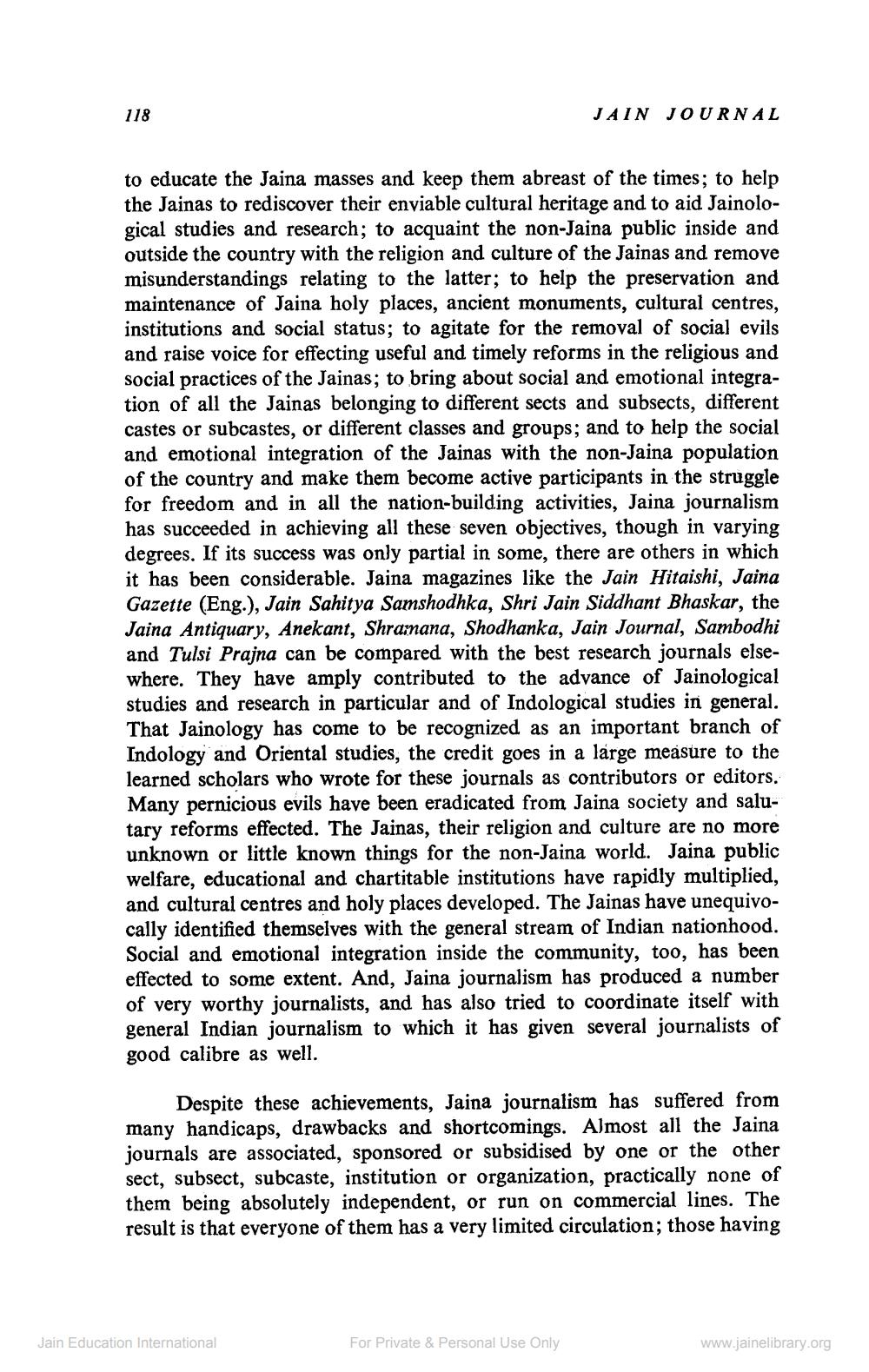________________
118
JAIN JOURNAL
to educate the Jaina masses and keep them abreast of the times; to help the Jainas to rediscover their enviable cultural heritage and to aid Jainological studies and research; to acquaint the non-Jaina public inside and outside the country with the religion and culture of the Jainas and remove misunderstandings relating to the latter; to help the preservation and maintenance of Jaina holy places, ancient monuments, cultural centres, institutions and social status; to agitate for the removal of social evils and raise voice for effecting useful and timely reforms in the religious and social practices of the Jainas; to bring about social and emotional integration of all the Jainas belonging to different sects and subsects, different castes or subcastes, or different classes and groups; and to help the social and emotional integration of the Jainas with the non-Jaina population of the country and make them become active participants in the struggle for freedom and in all the nation-building activities, Jaina journalism has succeeded in achieving all these seven objectives, though in varying degrees. If its success was only partial in some, there are others in which it has been considerable. Jaina magazines like the Jain Hitaishi, Jaina Gazette (Eng.), Jain Sahitya Samshodhka, Shri Jain Siddhant Bhaskar, the Jaina Antiquary, Anekant, Shramana, Shodhanka, Jain Journal, Sambodhi and Tulsi Prajna can be compared with the best research journals elsewhere. They have amply contributed to the advance of Jainological studies and research in particular and of Indological studies in general. That Jainology has come to be recognized as an important branch of Indology and Oriental studies, the credit goes in a large measure to the learned scholars who wrote for these journals as contributors or editors. Many pernicious evils have been eradicated from Jaina society and salutary reforms effected. The Jainas, their religion and culture are no more unknown or little known things for the non-Jaina world. Jaina public welfare, educational and chartitable institutions have rapidly multiplied, and cultural centres and holy places developed. The Jainas have unequivocally identified themselves with the general stream of Indian nationhood. Social and emotional integration inside the community, too, has been effected to some extent. And, Jaina journalism has produced a number of very worthy journalists, and has also tried to coordinate itself with general Indian journalism to which it has given several journalists of good calibre as well.
Despite these achievements, Jaina journalism has suffered from many handicaps, drawbacks and shortcomings. Almost all the Jaina journals are associated, sponsored or subsidised by one or the other sect, subsect, subcaste, institution or organization, practically none of them being absolutely independent, or run on commercial lines. The result is that everyone of them has a very limited circulation; those having
Jain Education International
For Private & Personal Use Only
www.jainelibrary.org




